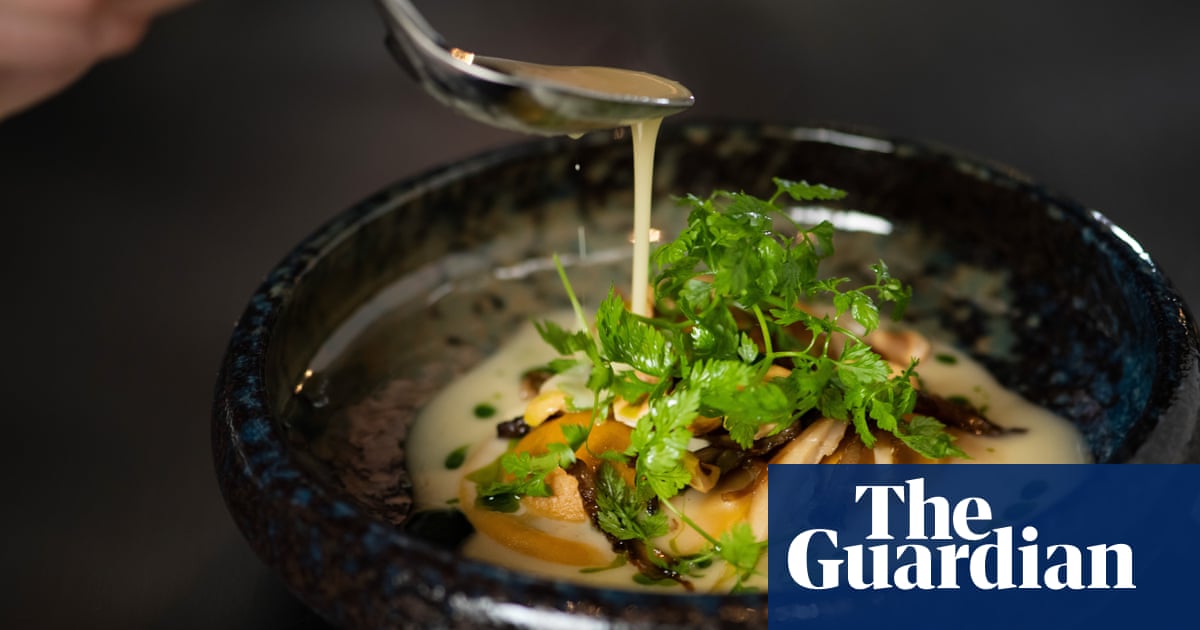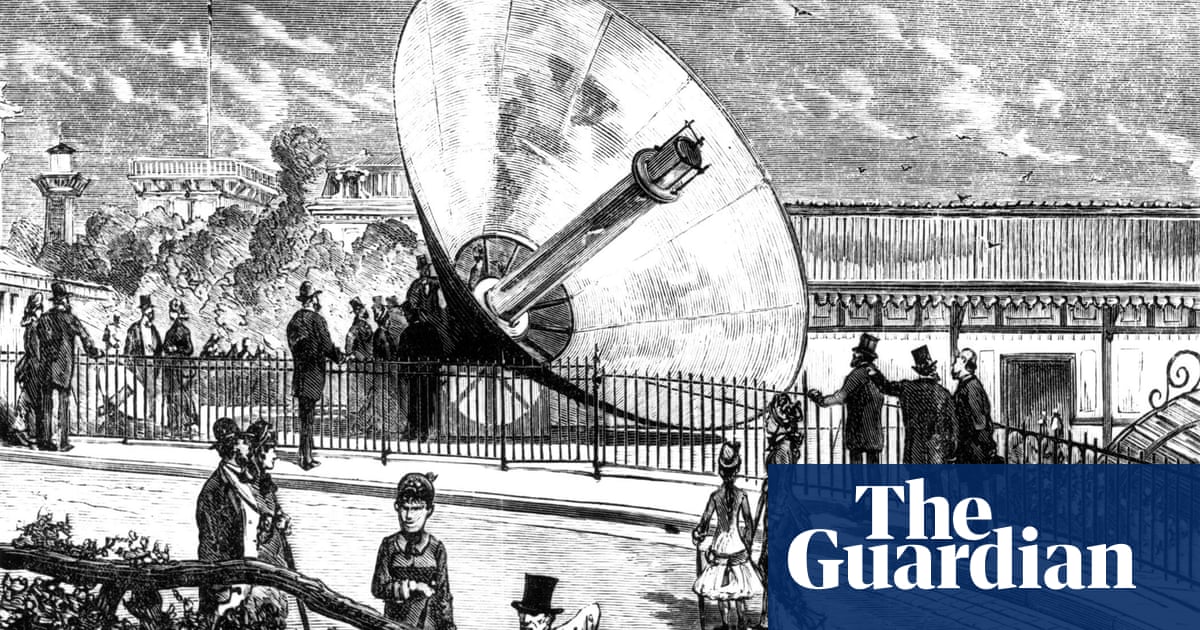
Nothing appears remarkable about a dish of fresh ravioli made with solein. It looks and tastes the same as normal pasta.
But the origins of the proteins which give it its full-bodied flavour are extraordinary: they come from Europe’s first factory dedicated to making human food from electricity and air.
The factory’s owner, Solar Foods, has started production at a site in Vantaa, near the Finnish capital of Helsinki, that will be able to produce 160 tonnes of food a year. It follows several years of experimenting at lab scale.
Solar Foods has already gained novel food approval for solein in Singapore, and is seeking to introduce its products in the US this autumn, followed by the EU by the end of 2025 – and the UK too, if the regulator can get through the deluge of cannabis-related products.
The factory’s output may be small in terms of the global food industry, but Pasi Vainikka, the Solar Foods co-founder and chief executive, hopes that proving its technology works will be a crucial step in revolutionising what humans eat.
Food and agriculture is responsible for about a quarter of all planet-heating carbon emissions. Its share of pollution is likely to grow as other industries shift to using green electricity, and ever-expanding middle-classes demand more meat for their tables. Up to now the focus for some climate campaigners has been to try to persuade people to eat less meat and more plants. Non-farmed proteins such as solein might make that approach more appealing.
Solein comes in the form of a yellowish powder made up of single-cell organisms, similar to yeast used in baking or beer-making. The company is hoping for those proteins to be used in meat alternatives, cheese and milkshakes, and as an egg replacement ingredient in noodles, pasta and mayonnaise.
The ravioli it served up this week was made with solein replacing egg, with a solein version of cream cheese. The Finnish confectioner Fazer has already sold chocolate bars in Singapore with added solein (which is also a handy source of iron for vegans). A Singaporean restaurant last year created a solein chocolate gelato, replacing dairy milk.
Vainikka was researching renewable energy systems at a Finnish research institute in 2014 when he met his co-founder, Juha-Pekka Pitkänen, a bioprocesses scientist. Pitkänen told him of soil-dwelling microbes that release the energy they need to live from oxidising hydrogen (rather than the glucose used by humans, for instance).
Together they built a 200-litre fermenter in a garage near Helsinki, to prove the technology could be used for food, but then went into the wild “finding new potatoes to grow”. All Vainikka will say on solein’s origins is that they found it somewhere “close to shore” in the Baltic Sea.
Almost all food consumed by humans at the moment ultimately comes from plants, which use energy from the sun for photosynthesis. That process converts carbon dioxide and water into the molecules they need to grow. Solar Foods instead uses the same renewable electricity from the sun to split water apart. It then feeds the hydrogen and oxygen to the microbes in a brewing vessel, plus carbon dioxide captured from the air from the company’s office ventilation system.
The claim that the proteins are made out of thin air is “never more than 95% true”, says Vainnika: 5% of the mixture in the brewing vessel is a solution containing other minerals needed by cells, such as iron, magnesium, calcium and phosphorus. The microbes are then pasteurised (killing them), then dried in a centrifuge and with hot air. That leaves a powder that can be used in food.
The process could also use CO2 from, for instance, burning fuels – although the molecule would end up back in the atmosphere once humans eat the solein and breathe out the carbon again. The real climate benefits from solein come from cutting the vast tracts of land used – and abused through deforestation on an epic scale – for animal feed and pasture. Instead, renewed forests could trap carbon.
Efficient US farmers get 3.3 tonnes of soya beans from each harvest of a hectare, according to the UN’s Food and Agriculture Organization. By contrast, Solar Foods’ pilot factory takes up a fifth of a hectare to produce 160 tonnes a year.
“As we can relieve pressures on agricultural land, they can rewild and return to being climate sinks,” Vainikka says.
Other companies are pursuing the same dream. Dozens are using microbes to create animal feed, although they often require sugars or fossil fuel feedstocks. One US rival, Air Protein, has opened a factory in California using similar “hydrogenotrophs” – hydrogen eaters. It has the backing of the food multinational Archer-Daniels-Midland, the British bank Barclays and GV (formerly Google Ventures).
The Dutch company Deep Branch, which is making fish food, claims its Proton protein will be 60% less carbon-intensive than conventional proteins. Deep Branch is looking at taking the CO2 produced by the UK biomass power generator Drax.
The companies have produced their test products. Now they face the challenge of proving their technology works at scale.
Vainikka says that is the key problem for cultured meat, or lab-grown meat. The market value of newly listed companies such as Beyond Meat soared during the coronavirus pandemic bubble, only to come crashing down as sales slumped. The opening of Solar Foods’ first factory will be crucial in persuading investors that the company will not suffer the same fate.
With meat protein, which is much more expensive than plants or cellular agriculture, there is simply no competition on price for each kilo. But Solar Foods and rivals could face other problems. Conservative politicians particularly in the US and Italy have identified lab-grown food as a threat to their ranching and farming cultures.
Vainikka argues that these fears are misplaced. He wants “coexistence of new and old”, with artisanal, high-quality farms remaining alongside cell farming that can deliver cheap, bulk foods. He argues it is “the opportunity of the century for the meat industry” to focus on quality rather than churning out as much cheap (and heavily subsidised) meat as possible. And plant agriculture will also remain, he argues.
“The future is not powder: the main body of food will still come through plants,” he says. The occasional “salami with the cultural heritage, that can remain. The meat in your lasagne during lunch will be done by cellular agriculture.”












